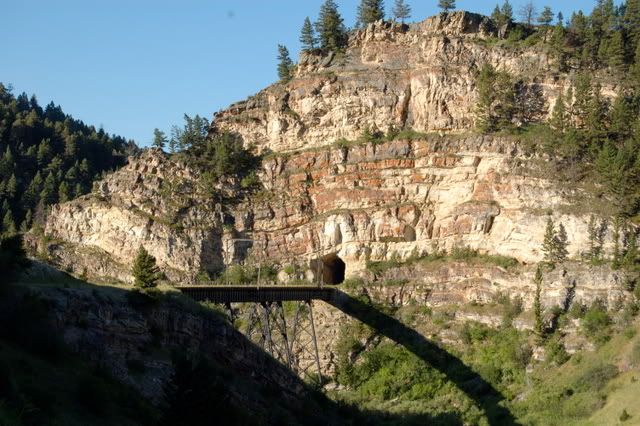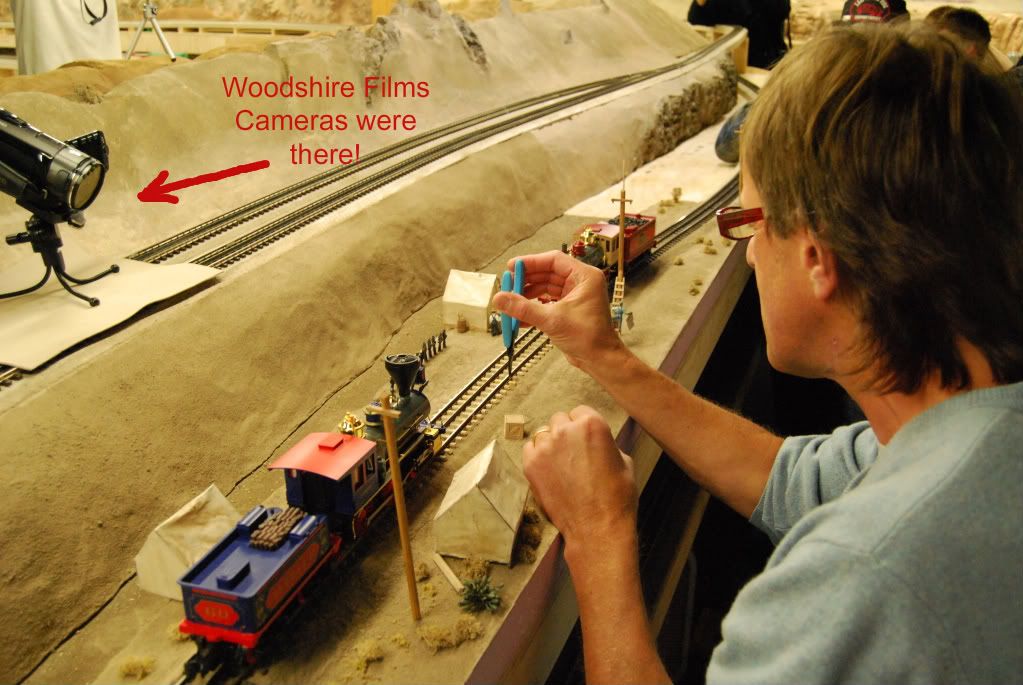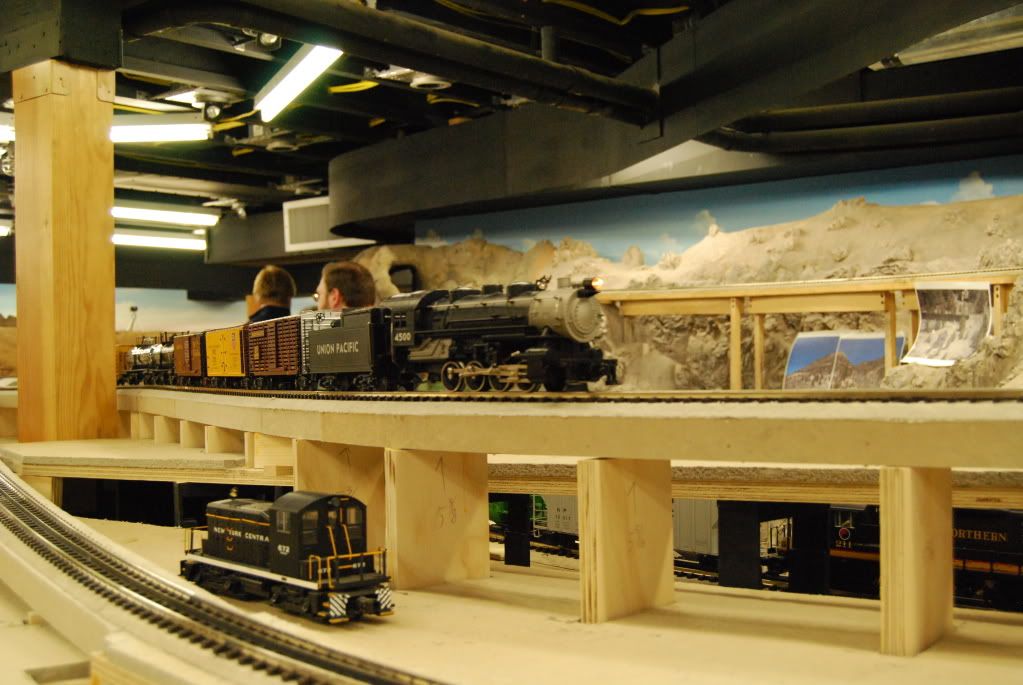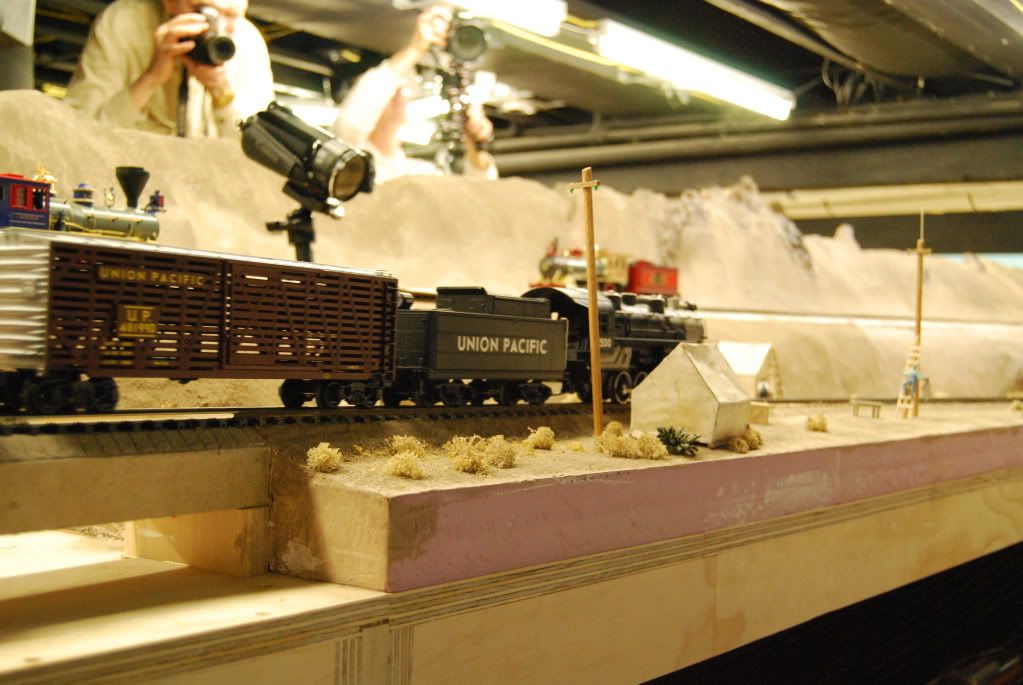Again, thank you very much for all the compliments. One of the reasons I enjoy posting about the NWTL here is that there are so many who appreciate seeing it come together. I hope some of you can find aspects of the NWTL that inspire your own modeling efforts.
quote:An interesting side story involving the famous "Gold Spike": For the grand opening of the California State Railroad Museum, during May 1981, the California State Highway Patrol transported the REAL Gold Spike from Stanford University to the California State Railroad Museum in the TRUNK OF A CHP PATROL CAR! Some of us from the 4449 crew, which arrived at the Museum about a week early for the big grand opening bash, where present when the CHP car drove into the grounds. The plain wood box was removed from the car trunk and carried into the new museum, to be placed in a thick glass viewing case, in order for for the public to see it. Upon questioning, the CHP officer allowed that the reason he was late; he had stopped for lunch enroute to Sacremento, WITH THE GOLD SPIKE IN THE TRUNK OF HIS CAR!
Some of us had the chance to "see it up close & personal" prior to the spike being placed in its viewing case. I sure wish I had had my camera with me!
Ten years later, for the 10th anniversary of the CSRM, the Gold Spike was transported from Stanford University in a BIG armored truck with a complete CHP escort. Upon arrival at the CSRM, an armed guard escorted "the wood box" into the building and ABSOLUTELY NO ONE WAS ALLOWED EVEN CLOSE! Someone finally understood the value & history of what was in "the box"!!!!
WOW! Cool story Jack. That must have been something to get to handle such an important piece of history.
I'm glad the powers that be in California now treat the spike with the consideration it deserves. Of course, the funny thing is the spike might have been safer from theft driving around in the trunk of the patrol car. Anonymity is a great security force. I remember hearing that the Hollywood jeweler, Harry Winston, use to deliver all his shipments (millions of dollars worth over the years) in plain brown packages via US Mail parcel post. He even shipped the Hope Diamond to the Smithsonian parcel post. He never lost a single shipment.
quote:Thanks for the recommendation, Dave! I will have to pick up a copy.
I've already read this one, and it was quite detailed:
Nothing Like It In the World, The Men Who Built the Transcontinental Railroad
Thank you springoflife. I will have to check out the book. The link I posted is to an on-line only article. As far as I know there is no print edition. It also focuses on just the events of the May 10th, 1869.
quote:Dave you should consider writing a book about all you did to create the NWTL.
Popsrr, I have been considering that since the early days of the NWTL. I'm thinking of a coffee table style book with lots of photos and maybe a companion DVD. I've taken over 15,000 photos along the way and the Woodshire film crew has done videos of our operating sessions. If anyone hasn't see those videos here's a link: Woodshire Films - NorthWest Trunk Lines
quote:I love the pictures of the layout, However the journey you made along both sides of the border(US/CA) a couple of years baCK was a favorite of mine. I liked all the work it took to figure out when to be a the face wall of the tunnel to get the pictures without shadows. Also loved the comments you made to the lady on the trip about the snakes and she laided down on the tressel to try and avoid them. I think you also had a very long hike in the darkness to just get to the place.
Wow, good memory Popsrr. Faith and I had a lot of fun on those trips and the trek out to Eagle Nest Tunnel was certainly a highlight. Again, for those who missed it, Faith and I got up at 4am in Helena, drove an hour on two lane highway, another half hour on dirt roads, and then hiked 6 miles just to get this picture.

That view, with the rock face in full sunlight, can only be seen for about 90 minutes each morning for about six weeks around the summer solstice. And yes, it is rattle snake country. You don't want to do a lot of walking, let alone lay down, in the grass.

quote:Fantastic, Can't wait to see the mainline video run.
Stay tuned Bill.

quote:Dave, it would appear that you have used 2" pink foam over plywood? I've done that with our home layout and also on the modular tables with Scaletrax. The noise level is quite high as if the foam actually amplifies the sound. Do you have the same there?
A home I originally had carpet foam under the (in my case) blue foam which was surprisingly loud. Then I reversed the placement with the foam direct to the plywood and the carpet foam on top with cork roadbed. Much better. At the club we just have the 2" foam on 1/4"Luann plywood which is awfully loud!
Hi Sam,
No, we are not laying the track over the foam. The layout is built with a mixture of cookie cutter and spline benchwork. In most of the area around the gold spike it's spline. Like this...

If you look carefully at some of the photos around "Promontory" you'll see the spline running into the sceniced area.

The foam is cut to fill the area between the plywood decking and the spline. Todd really likes using the foam to carve the base of the terrain. He then adds plaster rock molds, hydrocal, and True Scene Modeling Fibre. The spline construction is naturally quiet and the foam surrounding the spline just deadens the sound even more. The problem with building on sheet foam on a single layer of plywood is that the structure is quite flexible (low natural frequency). That flexibility allows the structure to vibrate and transmit sound just like a paper speaker cone. The trick is to make your benchwork VERY rigid (high natural frequency) and minimize the surface area attached to the track. One of the best construction methods I've found for modules is to use 1/4" luan plywood top AND bottom on 2" foam. Putting the ply on both sides makes a composite structure similar to the floors in Boeing aircraft. It's strong enough that I can walk on it (that's saying something





